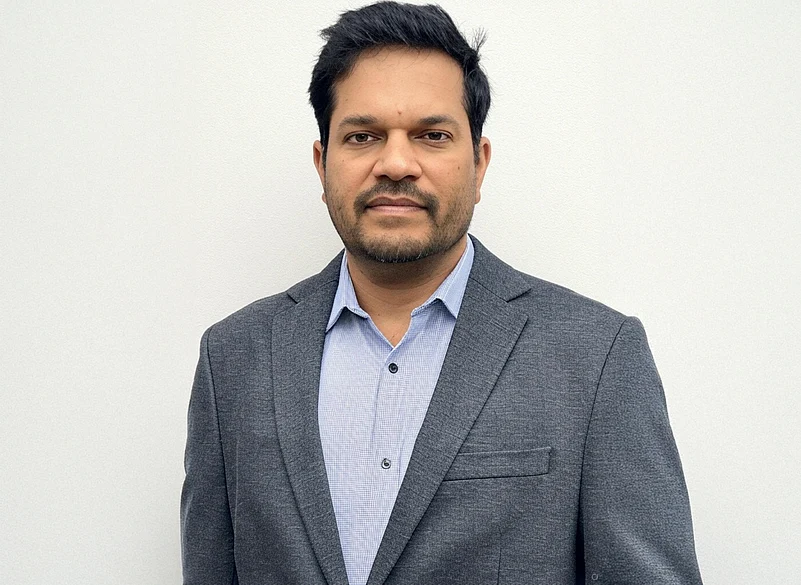In today’s complex technology environments—where decisions must scale across cloud, data, and AI—few professionals can unify foundational design with innovative research. Karthik Mani has contributed to areas such as AI, cloud-native engineering, and workplace automation. His expertise spans large-scale model optimization, safety frameworks powered by computer vision, and deployment architectures for resilient enterprise systems. With a career in engineering, Karthik applies a systems mindset to areas such as AI infrastructure, microservices design, and real-time analytics.
His research portfolio reflects that same clarity of purpose. Through a series of peer-reviewed publications, he has helped propose, validate, and improve architectural models that scale across data-heavy applications while remaining interpretable, safe, and operationally efficient. From quantum-inspired transformer models to reinforcement learning safety systems and optimized Kubernetes deployment strategies, Karthik’s work is based on practical engineering principles with a focus on enterprise application. His focus on connecting theoretical innovation with deployment-readiness makes his research relevant to both academia and industry.
Accelerating Language Model Training through Sparse Attention Transformers
Large language models (LLMs) routinely strain memory and compute budgets, largely because dense attention layers grow quadratically with sequence length. In “Quantum-Inspired Sparse Attention Transformers for Accelerated Large Language Model Training,” Asian Journal of Applied Science and Research in Engineering, Vol 2, 2022, Karthik addresses the bottleneck using a sparsity pattern informed by concepts from quantum search heuristics.
“Karthik says, ‘We explored how structured sparsity can emulate the probabilistic search spaces found in quantum logic, enabling faster convergence without sacrificing representation accuracy.’”
His experiments, run across varying transformer depths, show memory use dropping by double-digit percentages and epoch times shortening noticeably on commodity GPU clusters. Crucially, he does not treat efficiency as an island: benchmark scripts, hardware notes and ablation tables appear alongside the theory, allowing other engineers to reproduce results and weigh trade-offs against their own latency targets.
Computer-Vision Safety Loops that Learn in Real Time
Industrial injury rates often hinge on split-second posture mistakes or unsafe spacing between workers and equipment. In “Leveraging Computer Vision and Reinforcement Learning Algorithms to Enhance Workplace Injury Prevention,” Essex Journal of AI Ethics and Responsible Innovation, Vol 3, 2023, Karthik combines convolutional detection with reinforcement-learning feedback so that a camera system flags risk and also adapts its threshold as conditions shift.
“Karthik says, ‘Our objective was to build a feedback-aware safety loop—one that contextualises each alert, so operators know why a posture is risky, not just that it is.’”
He authored the integration path that marries edge-based image inference to low-latency RL agents, then demonstrated modular retraining so the same pipeline can move from a logistics floor to a machining cell with minimal re-annotation. Pilot data indicated a reductions in near-miss events, while supervisors gain dashboards that surface why a model reacted, helping auditors trace every corrective action.
A Kubernetes–Starling Hybrid for Financial-Grade Deployments
Financial workloads demand fault isolation and latency guarantees that plain vanilla orchestration cannot always meet. In “Enhancing Cloud Deployment Efficiency: A Novel Kubernetes-Starling Hybrid Model for Financial Applications,” American Journal of Autonomous system and Robotics Engineering, Vol 2, 2022, Karthik proposes a control-plane split in which Starling handles burst scheduling while Kubernetes maintains steady-state health.
“Karthik says, ‘The hybrid model keeps control and data planes distinct, trimming deployment latency and smoothing utilisation across mixed workloads.”
His contribution centres on the orchestration rules and CI/CD hooks: blue-green rollouts, rollback checkpoints and parallelised queueing that together raise success rates without inflating cost. Observability is baked in from commit to canary, giving operations staff a single pane of glass for both cluster and financial-compliance metrics.
Karthik has worked across disciplines with data scientists, reliability engineers, safety auditors and compliance officers. During each study he convened brown-bag reviews in which practitioners from divergent disciplines interrogated early prototypes, ensuring assumptions remained grounded in shop-floor reality. Those sessions often uncovered subtle edge cases—rare language tokens that overloaded an attention mask, or glare patterns that confused a posture detector—which he then folded back into the experimental design. By embedding such cross-checks, he developed what might have been isolated proofs of concept into artefacts suitable for pilot deployment. This collaborative rhythm also shortens onboarding time: because the notebooks and reference implementations carry inline explanations for every design choice, new engineers can extend or repurpose the work within days rather than weeks.
One Design Philosophy, Measurable Outcomes
Taken together, these studies reveal a consistent pattern. Karthik first quantifies the real-world friction—be it GPU saturation, unclear safety alerts or brittle deployment queues—then frames a solution whose mathematics, code and monitoring live side by side. That insistence on measurability means every architecture can be interrogated, tuned, and audited long after the paper is published.
The impacts are correspondingly tangible: LLM teams gain faster experimentation loops without premium hardware; factory managers spot and correct risks before injuries occur; and financial-services engineers cut release times while preserving governance. In each case, Karthik moves effortlessly between algorithmic fine points and day-two operations, ensuring novel ideas survive contact with production traffic.
Looking ahead, his notebooks explore federated learning at the edge and transformer distillation under tighter energy budgets—always with the same balance of theoretical clarity and on-call pragmatism. For organisations that must innovate without jeopardising reliability, that dual perspective makes Karthik a valuable contributor.
About Karthik Mani
Karthik Mani is a technology architect and applied researcher whose twenty-year career spans cloud-native infrastructure, machine-learning engineering, and large-scale software delivery. He has led modernisation programmes that migrate critical workloads onto fault-tolerant cloud platforms while embedding observability and automated governance from day one. His peer-reviewed studies on quantum-inspired sparse transformers, reinforcement-learning safety loops and hybrid orchestration are widely cited for pairing academic depth with deployment readiness. Beyond research, he builds CI/CD frameworks, data-security controls and self-healing runtime monitors that keep enterprise systems both agile and auditable. With an emphasis on transparency, traceability and human-centric safety, Karthik continues to engineering approaches that remain robust as scale, regulation and business ambition grow.














